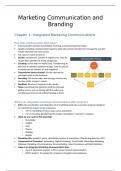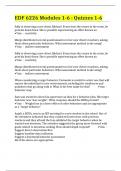Summary
Summary Marketing Communication and Branding
- Course
- Institution
- Book
Summary of chapters 1-7 and 10 from the book Integrated Advertising, Promotion, and Marketing Communications, Global Edition. These are all the chapters needed for the exam in the first year's subject Marketing Communication and Branding
[Show more]





